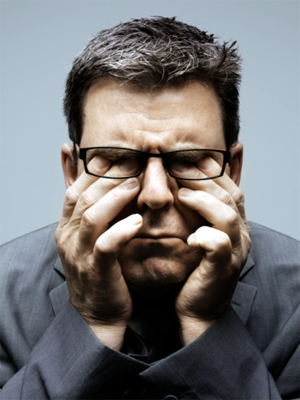Jan 01, 2026
Jan 01, 2026
 Stress is an agency (physical, chemical, psychological, microbial, or environmental) which tends to alter the physiological internal environment of the organism. In modern lifestyle 'stress' has become a fashionably common syndrome.
Stress is an agency (physical, chemical, psychological, microbial, or environmental) which tends to alter the physiological internal environment of the organism. In modern lifestyle 'stress' has become a fashionably common syndrome.
During life the internal environment is to be maintained constant or near constant by a process of continuous adjustment vis-a-vis the external environment, called homeostasis. These complex body processes were collectively designated by Hans Selye (1972) as the General Adaptation Syndrome (GAS). The GAS has three fairly well defined stages, namely, Alarm, Adaptation, and Exhaustion. The GAS in man is induced by the three well known Fs – Fright, Fight, and flight. These three animal characteristics cover our entire life. Chronic stress repeatedly induces this syndrome, which at the biological level works through the body chemicals adrenaline and corticosteroids, synthesized and released by the adrenal or suprarenal glands sitting on top of our kidneys.
During life we are oscillating between the stages of alarm and adaptation, and our body is effectively buffering stress. The moment adaptation is shattered we pass into the stage of exhaustion, and the diseases of adaptation follow. The list of stressors on this planet today is unending, and includes drugs, noise, stereophonic and quadraphonic music, infrasound, supersonic air travel, and diseases of all description. We are working full throttle, in the fast lane, at break neck speeds. This utilizes the body reserves much faster, and the incidence of
diseases of adaptation is on a steep rise. Perhaps today we as Homo sapiens should be renamed as Homo belligerans.
In this gamut of life today a common denominator is anxiety, i.e., a pervasive feeling of apprehension about some future threat to self. Thus, chronic anxiety becomes a cause of physical illnesses like headache, migraine, angina pectoris, high blood pressure, coronary heart disease, stomach ulcers, diabetes mellitus, heart attacks, arthritis, cerebral strokes, premature ageing, and gross mental disorders like depression and schizophrenia. Physicians prescribe medicines for the relief of the symptoms, but little can be done to cure the underlying cause. It is lamentable that peace does not come in capsules or pills. To escape anxiety some individuals start taking 'drugs', and slip into "addiction", which itself is a big stressor. Medical science today recognizes that emotions like fear, sorrow, anger, envy, resentment and hatred are responsible for 60% to nearly 100% of our sicknesses, and the concept of psychosomatic (mind and body) concept of disease has been evolved.
Stress is a fact of life, but succumbing to it is not. Regardless of the cause, stress sets in motion the "fight-or-flight" response designed to give the body a quick burst of energy. This attribute has evolved from our prehistoric ancestors. Our adrenal glands release more adrenaline and corticosteroids, breathing becomes faster, liver releases more glucose to provide extra energy, the heart beats faster and the blood pressure rises, blood flow to the brain and muscles is increased with simultaneous reduction in flow to the digestive tract, sweating increase and more calories are burnt without a rise in body temperature. After the stressor disappears the body activities return to normal (homeostasis). But on repeated (chronic) stress the body stays on "high alert" and leads to body tissue damage, which in turn causes the 'diseases of adaptation' as mentioned earlier.
How an individual copes with stress depends on his personality type. Type "A" personalities, who are highly strung, ambitious, and fiercely competitive (sympatheticotonic), were earlier believed to be more prone to heart disease, and diseases of adaptation. But later research bears the fact that Type "A" traits help the individual to cope with stress better than Type "B" personalities. Individuals with Type B traits appear to be relaxed and calm, but actually suppress their anger and anxiety. This 'internalizing' of bad feelings and emotions reduces their ability to cope with stress, and thus are more prone to stress-induced diseases.
The quotation goes as, "Two men look out through the same bars: one sees the mud, and one the stars". The two men reacted differently to stress factors in their confinement: one was frustrated by the bars, whereas the other was inspired by the stars. The former developed "inner stress", and exposed himself to disease, but the latter effectively coped with stress. Some people adapt to stress so well that they experience no ill effects. Since we have little control over the stress factors that daily bombard us, it is important to learn to adapt properly to save ourselves from stress-induced diseases. This can be done by:
A manual worker should spend his evenings in reading or writing, whereas a lawyer, teacher or doctor should spend his evenings spading flower beds, mowing the lawn or playing mild outdoor games, or walking. Failure to diversify sooner or later results in fatigue and internal stress. A good practice would be to divide time between three main angles of life: worship, work, and play. Daily prayer, scripture reading and visiting places of worship have great medicinal value. Our attitude of mind is the main deciding factor in determining our reaction to a stressful situation.
Chronic brooding over sorrows and insults indicates a faulty adaptation, and can cause conditions ranging from itch to insanity. The most common form of a faulty reaction is self-pity.
Lastly, if we are to adapt successfully to daily stressful situations, tactful avoidance of prolonged stressful situations is desirable. If we thoughtfully analyze the main cause of our faulty adaptation to life situations, we would discover the small four letter word – self. A good prescription is – don't cherish exaggerated ideas of your "self", but try to have a sane estimate of your capabilities. In humility think more of others than you do of yourself.
06-Dec-2005
More by : Dr. Frank S. K. Barar